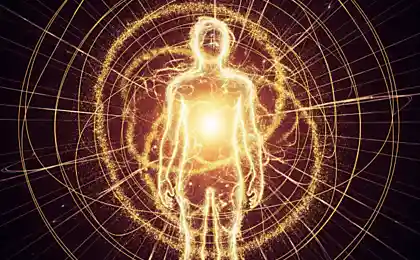90
8 Signs Your Partner Is Secretly Afraid of You
Is your energy so powerful that people around you are literally cringing with fear?

Each of us has a unique energy signature – an invisible field of influence that affects others on a subconscious level. Some individuals radiate such a powerful aura of confidence and strength that less stable individuals instinctively respond with defense mechanisms. This phenomenon has deep psychological roots and manifests itself through many subtle behavioral cues.
Research in social psychology shows that people form their first impression of a person in the first 7 seconds of a meeting, with 93% of information being transmitted through non-verbal communication channels.
Psychophysiology of fear in interpersonal communication
When a person encounters a personality that they subconsciously perceive as dominant or threatening, their nervous system automatically activates ancient defense programs. The sympathetic nervous system triggers a cascade of hormonal reactions, including the release of adrenaline and cortisol, which immediately affects the physical behavior and micro-expressions of the face.
It is important to understand that if others regularly show signs of discomfort in your presence, this is not necessarily a negative indicator. Perhaps you simply possess a natural leadership magnetism that requires finer control.
8 Key Indicators of Hidden Fear
1. Instinctive increase in physical distance
Proxemics, the science of spatial behavior, defines several areas of interpersonal interaction. When the interlocutor systematically maintains a distance of more than 1.5 meters in situations that do not require such a distance, this is a clear indicator of the activation of defense mechanisms.
Tactical approach: Gradually reduce the distance, watching the reaction. Use the principle of “two steps forward, one step back” – this will allow the interlocutor to adapt to your energy field without undue stress.

2. Violation of eye contact patterns
The eyes are a direct channel to the subconscious. When a person avoids direct gaze or shows intermittent eye contact, it indicates an internal tension. Neuropsychologists associate this behavior with the activation of the amygdala, a threat processing center in the brain.
Method of correction: Practice a “soft look” – focus not on the pupils, but on the area between the eyebrows of the interlocutor. This creates a sense of eye contact without psychological pressure.
3. Hyperactivity of compensatory movements
Excessive gestures, going through objects, tapping - all these are manifestations of kinetic stress. The subconscious tries to “discharge” the accumulated tension through physical activity. Especially indicative of self-soothing gestures: touching the neck, face, hair.
Synchronization strategy: Slow down your own pace of speech and movement. The human brain is prone to mirror reflection – your calm energy will automatically be broadcast to the interlocutor.
4. Significant decrease in verbal activity
If the usually sociable person suddenly becomes silent in your presence, this is a classic sign of psychological suppression. The prefrontal cortex, which is responsible for speech functions, can temporarily “switch off” under the influence of stress.
Activation technique: Use open-ended questions about the interlocutor’s personal experience. Self-talk activates neural networks of self-identification, which naturally reduces anxiety.
5. Incongruent emotional manifestations
Strained laughter in inappropriate situations is a defense mechanism of the psyche. When a person doesn’t know how to respond appropriately to your energy, they resort to the universal social lubricant of smiling or laughing, even if the context doesn’t require it.
Method of normalization: Respond with a sincere but restrained response. Avoid excessive emotional response - this can increase the discomfort of the interlocutor.
6. Muscle rigidity and closed postures
Tensioned shoulders, crossed arms, clenched fists are all physical manifestations of psychological defense. The body literally prepares for “fight or flight,” even if the rational mind realizes there is no real threat.
Relaxation techniques: Show open, relaxed postures. Mirror neurons automatically copy your condition, which will help the interlocutor physically relax.

7. Self-soothing tactile patterns
Frequent touches to the face, neck, lips activate the parasympathetic nervous system, causing a temporary reduction in stress. It is an instinctive attempt to self-regulate anxiety levels in the presence of a dominant personality.
Mirror technology: Repeat a similar gesture (for example, straighten your hair). This creates subconscious synchronization and reduces the sense of isolation in the interlocutor.
8. Instability of voice characteristics
The trembling of the voice, the change in timbre, sudden changes in volume - all this is the result of tension of the vocal cords under the influence of stress. The laryngeal muscles react to the release of adrenaline, which uncontrollably affects the sound of speech.
Support strategy: Lower your tone and speak more slowly. This creates an acoustic environment that contributes to the relaxation of the voice apparatus of the interlocutor.
Transformation of energy impact
Awareness of your own influence on others is the first step to developing emotional wisdom. Instead of suppressing your natural charisma, you should learn to modulate the intensity of the energy supply depending on the context and needs of the interlocutor.
The true mastery of communication lies not in dominating others, but in the ability to create a space where each participant in the interaction can show their maximum potential.
The practical application of this knowledge requires constant self-observation and fine-tuning of one’s own behavior. Develop the ability to read the energy signals of others and adapt your feed accordingly is the key to building harmonious and productive relationships at all levels of social interaction.
Conclusion
Your ability to influence others is a gift that requires responsible use. Learning to recognize the signs of discomfort in interlocutors and using appropriate correction techniques, you will not only create a more comfortable atmosphere of communication, but also reveal the true potential of your communication abilities. Remember, true strength lies in the ability to lift others up, not in the ability to suppress them.
Glossary of terms
Proxemic
Section of semiotics and nonverbal communication, studying the spatial and temporal organization of communication
Sympathetic nervous system
Part of the autonomic nervous system that activates in stressful situations and triggers the fight-or-flight response
Kinetic stress
Physical manifestations of psychological stress through excessive motor activity
Mirror neurons
Special brain cells that are activated both when performing an action and when observing its performance by others
Almond-shaped
The brain region responsible for processing emotions, especially fear and aggression
Parasympathetic nervous system
Part of the autonomic nervous system responsible for relaxing and restoring the body























